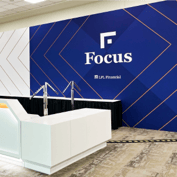One of the hard parts about writing and selling long-term care insurance (LTCI) is that insurers and their actuaries have to make predictions about what the world will be like 10, 20, 30, 40 or even 50 years in the future. Some of the younger consumers who buy LTCI today could still have policies in force in 2075.
See also: How to Predict the Cost and Future of Care When Conducting Long Term Care Planning
Events that fill everyone else with joy can fill LTCI issuers with gloom. Are interest rates at the lowest level since Adam and Eve ate that apple? That’s great for home buyers, but terrible for LTCI issuers. Are LTCI claimants living longer than expected, in part, perhaps, because LTCI benefits make them more comfortable in their later years? That’s great for the policyholders, but hard on the issuers.
But the LTCI issuers that get through this difficult period of bad good news could have the last laugh, because science and technology may still be their friends. The general assumption seems to be that Alzheimer’s and its evil cousins, such as Parkinson’s disease, will continue to afflict huge numbers of older people every year and that dreams of preventing or curing those conditions are about as realistic as wishing for elves to bring us cookies.
But new techniques, such as greatly improved gene sequencing systems, are giving scientists great new ideas for those conditions. Meanwhile, technologies and practices that already exist, and baby boomers’ comfort with those technologies and practices, could help the “oldest old” people of the future get more out of the abilities they still have.
A woman born in 1925 might have cooked her whole life, gone to restaurants when she wanted to eat something other than home-cooked food, and visited a store when she needed to shop for clothes. She may instinctively think of a computer as a machine the size of a refrigerator that helps the government process income tax returns and land spaceships on the Moon, not something to help her with the instrumental activities of daily living.
Many baby boomers, in contrast, are already used to ordering delivery food through GrubHub.com, groceries through Fresh Direct, and geometric pattern sweaters knitted from organic fermented yak hair through Etsy. A man born in 1955 may already be used to connecting with many of his friends and relatives through Facebook and Instagram. With even a little additional technology, he may have a much easier time coping with aging-related physical limitations in 2040 than a typical woman born in 1925 would have had with coping with her physical limitations in 2010.
Boomers and members of Generation X could also benefit from advances in assistive technology, including the development of better robots, better building design methods, and, of course, wearables.
The best-known wearables are fitness trackers that are hidden in a nightstand drawer, mixed in with the safety pin stash and old movie ticket stubs.
Of course, no-technology and low-tech solutions for problems often beat high-tech solutions. Seth Bailey, chief executive officer of iTOK, a home tech support firm, said in an e-mail interview that, even when high-tech solutions help, anti-wearables, or systems embedded in the environment, such as the Philips Vital Signs Camera app, may be cheaper and more practical than a wearable.
To track vital signs with the camera app, all have users have to do is install the app on a phone, carry the phone around and run the app every so often. Chances are that a tech-savvy user is already carrying a phone around and charging it on a regular basis. To get value out of wearables, “people have to remember to wear them and frequently charge them,” Bailey said.
But Apple Inc. (Nasdaq:AAPL) has brought some excitement back to the wearable market by developing an Apple Watch. One common reaction is, “Yawn.” Another common reaction is to remember just how interested anyone was in mobile touch screen devices before the Apple iPhone and iPod Touch came along (not very) and made touch screens hot, hot, hot.
See also: Will Google make LTC devices?
Many of the developers are young, and thinking more about the youth fitness market than about helping frail people and people with disabilities, but it seems as if the devices could have crossover appeal for people who are trying to stay independent for as long as possible.
Of course, it’s hard to know which technologies will live up to expectations and which will sputter, but even some of the ones that fade quickly could give product developers ideas for more successful products.
For a look at five interesting wearable technologies that are on the market, or nearing the market, today, read on.
5. Tracking and communication devices
LifeCall made a wearable medical alert pedant famous throughout United States in 1989, with TV advertisements featuring older characters who said, “I’ve fallen and I can’t get up.”








 March 09, 2015 at 07:50 AM
March 09, 2015 at 07:50 AM









